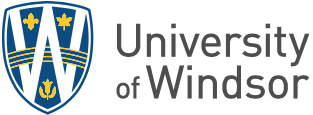In collaboration with Sioux Valley Dakota Nation, researchers from Simon Fraser University, Brandon University, and the University of Windsor are conducting an investigation to identify the children buried in unmarked graves at the Brandon Indian Residential School in Manitoba.
The Brandon Residential School Cemeteries Project intends to identify the names of children who died at school while it was in operation from 1895 to 1972. Using forensic methods coupled with archival research and interviews with survivors, the project team will reclaim the identities of children and work with affected communities and families.
“This project is integral in raising awareness and reinforcing public education on the legacy of historical trauma of Indigenous people in Canada,” says Evelyn Pratt, Sioux Valley councilwoman. The nation continues to seek ways forward to identify and protect the site’s cemeteries. “The proper and respectful identification leading to the repatriation of the remains of those innocent lives lost will hopefully provide closure and healing for families.”
Project collaborators include SFU professor and project lead Eldon Yellowhorn; SFU doctoral candidate Katherine Nichols; SFU faculty researchers Deanna Reder, Hugo Cardoso, and Dongya Yang; University of Windsor professor John Albanese; Brandon University professor Emily Holland and student Darian Kennedy; and other student research assistants.
The collaborators share the sadness of the Tk’emlups te Secwépemc First Nation regarding the preliminary results of the investigation of the former Kamloops Indian Residential School. Those working on the Brandon project are aware that communities and families of missing children across the country are now being reminded of their losses once again. Now they must confront old questions regarding their children. Although their grief is private, they desire resolution.
Investigations into the cemeteries and unmarked graves at the Brandon school site began in 2012. Sioux Valley Dakota Nation chief and council and other landowners collaborated with Nichols, who at the time was a master’s student at the University of Manitoba. The results of Nichols’ thesis research found death records for 70 children but a site survey indicated additional unmarked graves, including some that were not in the cemetery.
The Brandon project team received funding in April 2019 from the Social Sciences and Humanities Research Council of Canada to pursue the project but the work was interrupted by the pandemic. While the impact of COVID-19 has created challenges for the project and prevented community gatherings and ceremonies, collaborators plan to reach out to affected communities when everyone can meet safely.
“Despite the associated ethical, legal and logistical challenges, the Sioux Valley Dakota Nation is committed to ensuring that community-led research is grounded in culture, following the guidance of our Elders, and is conducted in a holistic and ethical way,” says Chief Jennifer Bone.
Following the wishes and requests of the respective communities involved, the plan is to restore the children’s identity, either through commemoration or repatriation.
“There is hurt and pain in our community today. However, I would like people to know that we are not powerless here. We have put together a world-class team of archaeologists, geneticists, physical and forensic anthropologists, and archival researchers. Our team brings together the kind of expertise that is needed to remedy this situation,” says Dr. Yellowhorn.
In a joint statement, the Sioux Valley Dakota Nation and the research team restate their recommendations to the Government of Canada about residential schools and related areas:
- To implement the Truth and Reconciliation Commission of Canada Calls to Action, specifically actions pertaining to missing children and burial information;
- To fund long-term community health and trauma support;
- To fund long-term community-based research across Canada;
- To develop a centralized and public cemetery database and registry; and
- To enact legislation to protect all residential school cemeteries.
Ultimately, the collaborators hope their efforts will provide a framework that can be adopted and applied by Indigenous communities, as a guide to initiate and proceed in their own process.
“Through this partnership, we are creating a roadmap that can help Indigenous communities across Canada to navigate a complex system to restore the identities of children who never had a chance to live their lives,” says Dr. Albanese.